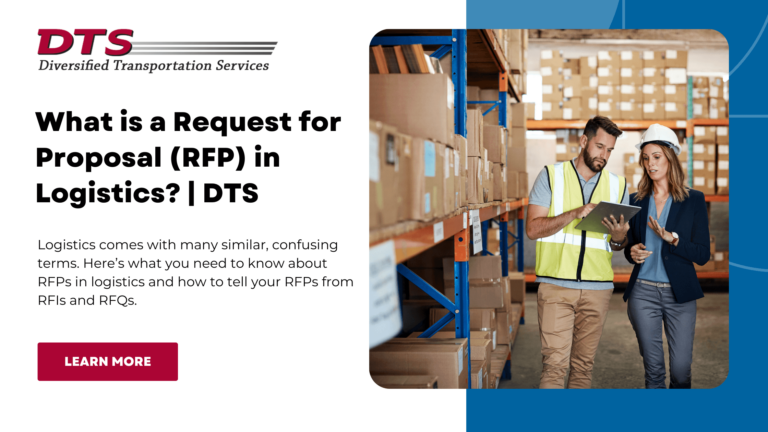
Request for Proposal (RFP) documents play an important role in the business and shipping worlds. These documents act as a set of terms laid out by two businesses, enabling seamless collaboration between each party.
RFP is a common term you might see when your business starts working with logistics providers. But you might also see similar terms like RFI and RFQ thrown around with RFP — all those acronyms can get confusing!
Let’s look at everything you need to know about RFP in logistics and help demystify this common logistics term.
A Request for Proposal, or RFP document, outlines requirements for working with another business. It lays out the company’s requirements for the service they wish to receive and contains key information regarding the business. Everything in the RFP document helps ensure that both parties are aligned during their collaboration.
In the logistics and transportation sector, RFPs act as proposals to help your business find a third-party logistics (3PL) provider that best meets your needs. The document is crucial for finding a suitable and reliable business partner to place a bid. It also acts as a request for information so you can learn more about the business you’re approaching, what they do, and how they can help make the partnership successful.
RFP has become an umbrella term that people use for RFPs, RFIs, and RFQs. While these terms are used interchangeably, doing so can cause headaches. Each document contains similar elements, but each has clear and important distinctions. Getting to know these distinctions will help make your search for logistics help much easier. Let’s look at what each document is for:
RFI (request for information) documents are for fact-finding and are used in the early stages by companies that are new to the marketplace they’re looking to enter. RFIs contain open-ended questions designed to invite the vendor to open up about its full range of offerings.
The RFI document will outline the business challenges you’re facing, and the vendor will respond by tailoring their response to the context you have provided. This will often include information from the vendor regarding their position in the marketplace and what fees you can expect. In logistics, RFIs are often used to create a shortlist of carriers or 3PLs.
You can think of RFP (request for proposal) documents as a call to action. They usually follow the RFI and require the vendor to respond with solutions to your business challenges.
The RFP document will be far more detailed than the RFI, outlining business goals and requirements that the partnership should achieve. However, there shouldn’t be so much detail that all your prospective vendors end up coming back with the same solutions.
In logistics, RFPs provide information on service offerings and prices as well as information on how well a 3PL might mesh or fit with your business.
The RFQ (request for quotation) document is the most detailed of the three. It should contain the exact specifications required by the company.
The RFQ will usually contain a table that lists each requirement and then asks the vendor to assess its ability to meet that requirement. The vendor then needs to clarify if it can meet the requirement immediately, if it requires some additional configuration, or whether it will require a third party to help meet the specifications.
RFQs are more focused on costs for specific services and are used to compare pricing across logistics providers.
The RFP process includes more than just writing and sending the document and includes a few key steps. Don’t worry — these steps are easy, even for first-timers.
Writing an RFP isn’t as difficult as you might think. You just need to ensure you include all the relevant information. Here’s a quick guide to help you get started:
If your business hasn’t worked with a 3PL before, it doesn’t hurt to give a little information about your company. Learning what your company stands for and understanding your mission statement will make prospective partners more interested in working with you.
This step is crucial to ensure your new partner will meet your needs. Avoid anything vague, but don’t get so detailed that you end up laying out your own solution. You want to give just enough information to spark creativity, resulting in a complete solution.
You know what you need from a logistics partner, so be open about your expectations and key requirements. This will help 3PLs tailor their response and will help you choose the best prospect for the job.
Unsure of anything at all? Just ask. The more questions you ask, the more likely your prospective partner will meet your expectations. Remember, transparency is key to any business relationship.
There’s a lot to learn about the world of shipping, and it’s not always simple! You can learn new things or brush up on what you already know over on the DTS blog. We break things down to the simplest terms so you can fully understand everything you need to do the best job possible.
We’re just a message away for the rest of your logistics, shipping, and freight needs.
Whether you're a company looking to improve one facet of your supply chain, your entire supply chain, or simply looking for a transportation and logistics consultation, we can help.